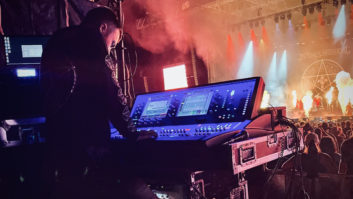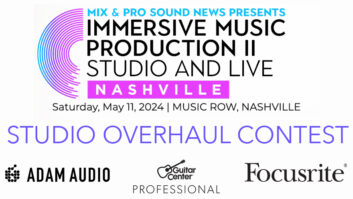
Clive Young,
Editor-In-Chief, PSN
Sometimes it seems like everything old is new again—for instance, during the summer when all the sequels come out, or when you walk into the (increasingly rare) local music shop and find new vinyl records flying out the door. Vinyl has been an interesting success story over the last few years—revenues from new records were $416 million last year, their highest point since 1988—but those sales are still a drop in the bucket compared to 2015’s digital sales: $2.3 billion for digital singles and albums, and $1.5 billion for the CD. Still, there’s no denying vinyl is back—and it’s not the only aged audio format that’s returned from the brink.
While much further under the radar than the Vinyl Revival, the return of audiobooks has been nothing short of spectacular. Yes, audiobooks, which are based on the oldest media experience there is: sitting around listening to a story. We’ve done it ever since we were cavemen gathered around the fire—and yet, anything that’s lasted that long has an incredible, proven worth. With that in mind, it’s almost surprising that audiobooks nearly died out less than six years ago; it doesn’t matter now, however, because today, they’re hotter than ever.
During the heyday of the compact disc—the late 1990s—audiobooks were a marketplace of about $480 million a year, according to the Audio Publishers Association. By 2009, however, sales and revenues had plummeted for an industry that was slow to take up downloads and was still focused primarily on CD box sets sold at eye-watering prices that made them gifts or luxury items rather than spur-of-the-moment purchases.
A turn-around came, however, thanks to a number of factors: the widespread adoption of smartphones, which allowed listeners to browse, buy and listen anytime, anywhere; an ensuing shift among listeners from physical to download formats; a industry-reactive drop in prices; and the advent of audiobook subscription services like Scribd and Amazon Kindle.
Most importantly, however, was the fact that audiobook publishers invested in their greatest asset: their content. In 2011, 7,237 audiobook titles were published, whereas last year, 35,574 titles came out. With publishers opting to release more titles in a wider variety of genres, listeners are now voraciously consuming more audiobooks than ever before. As proof, the APA estimates that sales in 2015 rose to more than $1.77 billion, up 20.7 percent over 2014.
All that said, is there money to be made here for audio pros? It depends who you ask. The Wall Street Journal reported in July that one publisher, Penguin Random House Audio, recently nearly doubled its number of in-house studios in Los Angeles and New York for a total of 13, and it’s not hard to imagine why. Taking as much production in-house as possible would help cut costs and lead to better uniformity of product and continuity of listener experience. Audiobook production can take three to four months from assignment to release, as Aaron Blank, executive producer for Penguin Random House Audio, told Pro Sound News in 2013, so anything that would speed up that process would be a no-brainer.
In a comment on prosoundnetwork.com, engineer Lou Judson noted that while he spent much of the 1980s and 90s recording audiobooks for independent publishers, since then, “…the independent business dried up quite a bit. Now with the proliferation of good recording equipment, many if not most voice talents can produce their own product, resulting in less studio business, even as there are more audiobooks on the market…. So there are still projects happening, but it is spread thinly between the publishers, the studios, and the voice talent themselves.”
Nonetheless, the consumption of audiobooks is predicted to continue growing, and that may inevitably lead to utilizing outside audio production, if only to meet demand. At least one entity must be counting on it—the Los Angeles-based Deyan Institute of Vocal Artistry and Technology (DIVA) which opened in 2014, billing itself as “the world’s first school for teaching the art and technology of audiobook production.”







